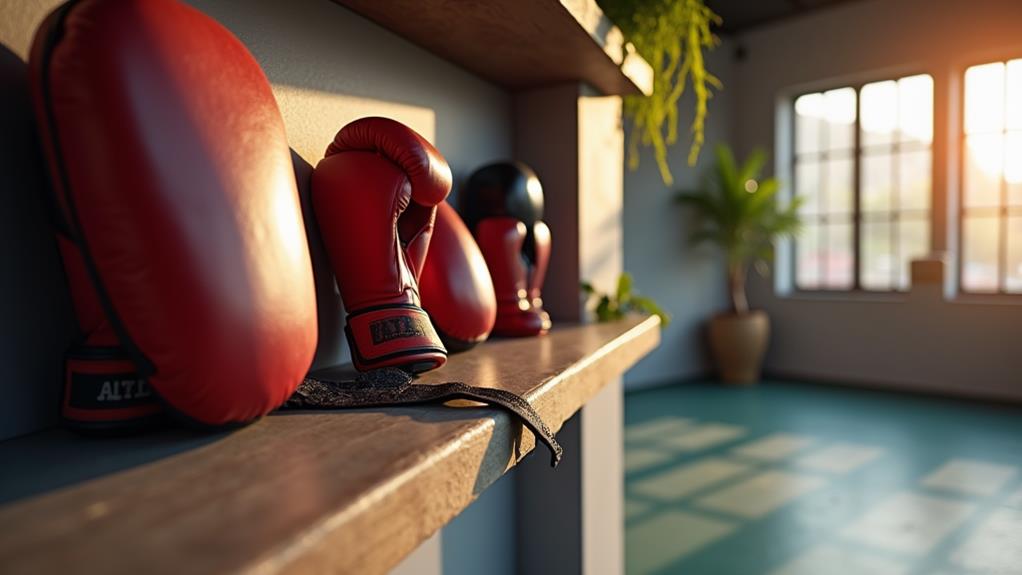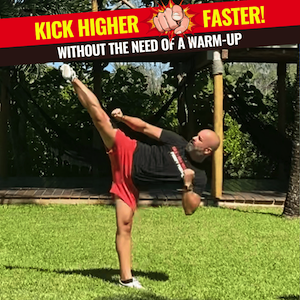You're not alone in your quest to conquer fibromyalgia as a mature martial athlete. By modifying your martial arts training, you can manage chronic pain, improve mobility, and enhance your overall well-being. Low-impact styles like Tai Chi and Aikido can help reduce joint stress and promote flexibility. You'll also benefit from incorporating relaxation techniques, such as meditation and deep breathing, to aid in pain management and improve mental well-being. As you explore the connection between martial arts and fibromyalgia, you'll discover more ways to adapt your training and lifestyle to achieve a healthier, more balanced life.
Understanding Fibromyalgia and Its Impact
Delving into the complexities of fibromyalgia is crucial for martial athletes looking to overcome its debilitating effects. As a martial athlete, you're likely no stranger to pushing your body to its limits, but fibromyalgia can make even the simplest tasks feel like a monumental challenge.
This chronic pain syndrome is characterized by widespread pain, fatigue, muscle soreness, and cognitive issues that can greatly impact your daily living and quality of life. You may experience intense migraines, depression, anxiety, brain fog, and irritability, making it difficult to manage your condition.
Fibromyalgia can also be tricky to diagnose, often taking years to identify, and its symptoms can be exacerbated by physical activity, including martial arts training. However, it's important to note that martial arts can also offer numerous health benefits that can help alleviate fibromyalgia symptoms.
By understanding the intricacies of fibromyalgia and its impact on your body, you can begin to develop effective strategies to manage your condition and continue enjoying the martial arts training that brings you joy and fulfillment.
Benefits of Martial Arts for Fibromyalgia
As you navigate the complexities of fibromyalgia, it's crucial to explore the many benefits that martial arts can offer in managing your condition.
Regular martial arts practice enhances your mobility and posture, helping to alleviate chronic pain and discomfort associated with fibromyalgia. You'll also improve your strength across major and minor muscle groups, contributing to better overall physical conditioning and reduced symptoms.
Martial arts training also promotes mental well-being by teaching you breath control and relaxation techniques, such as those found in Tai Chi. These techniques can lead to reduced anxiety and improved emotional resilience.
Additionally, martial arts training provides opportunities for social interaction and camaraderie among practitioners, offering emotional support that can help combat feelings of isolation often experienced by those with fibromyalgia.
Choosing the Right Martial Art

Your martial arts journey with fibromyalgia begins with an essential step: selecting a style that complements your needs and abilities.
You'll want to choose a martial art that minimizes joint strain while still providing a productive workout. Tai Chi is an excellent choice, as it focuses on low-impact movements that enhance flexibility and relaxation. Its slow, flowing movements can help you manage chronic pain while improving overall well-being.
Other options, such as Brazilian Jiu-Jitsu (BJJ), may also be suitable. BJJ emphasizes ground-based techniques that prioritize skill and technique over strength, reducing the risk of stress on your joints.
Aikido is another adaptable style that incorporates joint locks and throws, which can be modified to accommodate your physical limitations. Karate, Wing Chun, and Kali are also low-impact options that can be beneficial for individuals with fibromyalgia.
When choosing a martial art, consider your goals, fitness level, and physical limitations. By selecting a style that suits your needs, you can set yourself up for success and enjoy the many benefits that martial arts have to offer.
Research and observe different classes to find the best fit for you and your fibromyalgia.
Modifying Training for Chronic Conditions
Faced with the challenge of incorporating martial arts into your fitness routine while living with fibromyalgia, it's essential to modify your training to avoid exacerbating chronic conditions. Modifying training is not about giving up, but about being smart and responsible with your body. By making adjustments, you can enjoy the benefits of martial arts while managing your condition.
| Martial Arts Modification | Benefits | Tips |
|---|---|---|
| Low-impact styles (Tai Chi, Aikido) | Reduces joint stress, promotes flexibility | Focus on relaxation and technique |
| Tailored training programs | Gradual reintroduction, adapts to pain levels | Consult with healthcare professionals |
| Warm-up and cool-down routines | Aids in pain management, prevents exacerbation | Make it a habit before and after training |
Managing Pain and Fatigue

Managing pain and fatigue is a top priority for martial athletes living with fibromyalgia. As you continue to train, you'll need to find ways to alleviate chronic pain and manage fatigue. One way to do this is through tailored low-impact martial arts training, such as Tai Chi and Brazilian Jiu-Jitsu. These styles emphasize gentle movements and technique over brute strength, which can help reduce the intensity of fibromyalgia symptoms.
You'll also want to focus on building strength and flexibility through consistent martial arts practice. This can help alleviate symptoms of fatigue and discomfort associated with fibromyalgia. Be sure to incorporate warm-up and cool-down routines into your training to prevent exacerbation of pain.
Additionally, implementing strength training within your martial arts routines can help improve muscle endurance and overall fitness levels, reducing the intensity of fibromyalgia symptoms. By targeting specific muscle groups through martial arts training, you can take control of your pain and fatigue, and continue to thrive as a martial athlete.
Nutrition and Lifestyle Changes
Healthy plate habits are an integral component of effective fibromyalgia management. As a martial athlete, you need to fuel your body with the right foods to reduce pain and inflammation. Focus on incorporating anti-inflammatory foods like fruits, vegetables, and omega-3 fatty acids into your diet.
Pay attention to portion control and label reading to maintain a balanced diet and manage your weight effectively.
Making lifestyle changes can be easier when you involve your loved ones. Engage in family-centered healthy living initiatives, such as cooking nutritious meals together, to enhance relationships and motivate collective change.
Identifying and avoiding food sensitivities, like gluten or processed sugars, can also alleviate symptoms for some individuals.
Don't forget to drink plenty of water, as hydration is vital for improving energy levels and supporting metabolic function.
Mindfulness and Self-Awareness

Developing mindfulness and self-awareness is essential for martial athletes with fibromyalgia, as it enables you to better navigate the complexities of chronic pain and stress. By cultivating mindfulness through practices like meditation and focused breathing, you can enhance your self-awareness and improve your ability to manage pain and stress levels.
Martial arts training itself promotes mindfulness by emphasizing body awareness and control, allowing you to recognize your physical limits and emotional responses more effectively.
As you practice mindfulness in your martial arts training, you'll develop a stronger mind-body connection, which can lead to significant reductions in fibromyalgia symptoms like pain, fatigue, and anxiety. By becoming more self-aware, you'll be able to identify and respond to triggers that exacerbate your symptoms, taking a proactive approach to pain management.
This increased self-awareness will also enable you to make more informed decisions about your training, allowing you to balance your physical activity with rest and recovery. By integrating mindfulness and self-awareness into your martial arts practice, you'll be better equipped to manage your fibromyalgia and improve your overall well-being.
Collaborating With Physical Therapists
As you cultivate mindfulness and self-awareness in your martial arts training, you'll likely discover areas where your body needs additional support. That's where collaborating with physical therapists (PTs) comes in.
PTs play an important role in managing fibromyalgia by developing personalized rehabilitation programs that address specific pain points and promote overall mobility. They utilize a regional interdependence model to assess movement patterns and create targeted treatment plans that include manual therapy, stretching, and neuromuscular reeducation.
Regular sessions with a PT can help you maintain ideal physical health, thereby enhancing your martial arts training while minimizing the risk of exacerbating your symptoms.
It's vital to report minor pain issues promptly to your PT, which can lead to timely interventions and prevent more severe complications.
As a martial artist, consider working with PTs who've backgrounds in martial arts, as they can provide specialized insights into injury prevention and management strategies that are particularly beneficial for mature athletes dealing with chronic pain conditions like fibromyalgia.
Maintaining Motivation and Progress

Maintaining Motivation and Progress
=====================================
How do you stay motivated and driven in your martial arts training when fibromyalgia symptoms threaten to derail your progress? Establishing a consistent exercise routine is key. Low-impact martial arts like Tai Chi or Aikido can improve motivation and help manage symptoms by enhancing flexibility and reducing pain levels.
| Motivation Boosters | Benefits | Tips for Success |
|---|---|---|
| Consistent Exercise Routine | Enhances flexibility, reduces pain | Start with short sessions, gradually increase duration |
| Realistic Goal Setting | Boosts self-esteem, sense of accomplishment | Break down long-term goals into smaller, achievable milestones |
| Supportive Communities | Fosters motivation, shared experiences | Join online forums or local support groups |
| Tracking Progress | Provides tangible data on improvements | Use wearable devices to monitor physical metrics |



